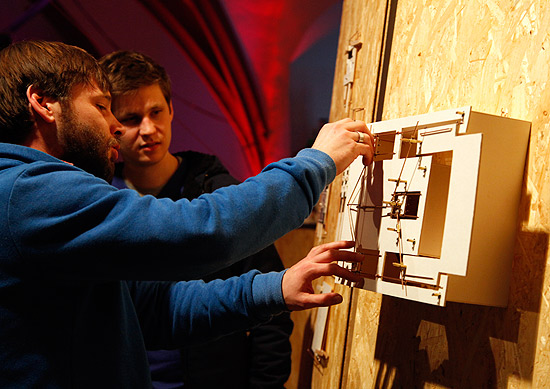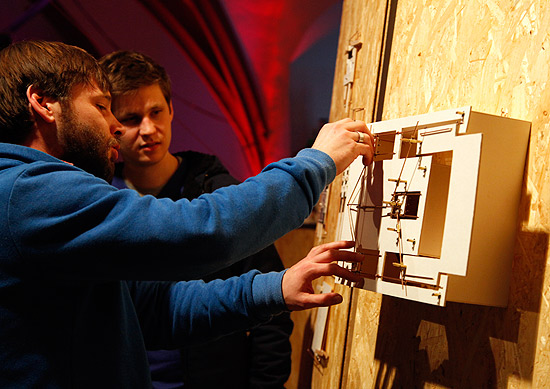

In the last year the programming literacy movement has shown that many of us are keen to understand code and dymistify the “digitality” of digital media. That appetite has also being channeled into clever craft explorations of computation, like Niklas Roy's recent Cardboard Computer workshop conducted at the Offenbach School of Art & Design. Over the course of a week he set students a brief of recreating the essential components of computers using cardboard, glue and a whole heap of ingenuity.
The aim was to explore what analog metaphors for “drap and drop” might look like, and the results of the workshop have thrilled us. All the crucial elements of computers were abstracted into wonderful cardboard craftworks.Philipp Medrala created a crank operated punch card reader as representative of the crucial data component of computers. This form of data storage hasn't been around for some 40 years but was once the main way of storing data in the days of room filling supercomputers.

Tilmann Aechtner recreated a digital clock in cardboard: clocks are essential to how a computer performs executes the instructions it receives from code (for instance a 2.4 ghZ intel processor can execute 2,400,000,000 instructions per second because its clock is that precise).

Carolin Liebl and Lisa Hopf explored the fundamental logic of computers by creating a cardboard NAND gate. Logic gates such as this enable computers to perform calculations: in this case the NAND compares two binary inputs and calculates one binary output.

The very ambitious “Let's Go” created a localised signalling system. Signals could be sent between four different stations which were connected via rope to a central information distribution knot. That knot functioned in a way similar to analogue telephone operators.

To get a handle on how digital media operates its necessary to push against the miniturisation and optimisation that make digital economies so powerful. Far from being luddite these cardboard creations make compoutation more comprehensible and what's not to love about that!


